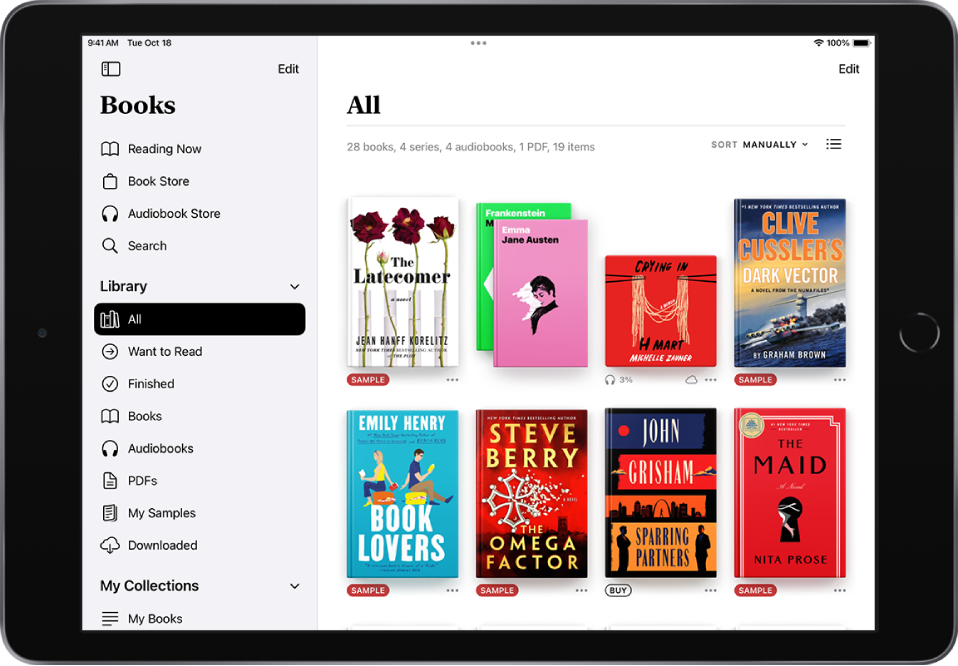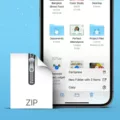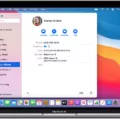The iPad has become a popular device for reading books, magazines, and other documents. With its large screen and user-friendly interface, it offers a seamless reading experience. One of the great features of the iPad is the ability to transfer files to the iBooks app, which allows you to access your favorite books and documents anytime, anywhere.
To transfer files to iBooks on your iPad, you will need to have the iBooks app installed on your device. If you don’t have it yet, you can download it from the App Store. Once you have the app installed, you can follow these steps to transfer files to iBooks:
Step 1: Connect your iPad to your computer using a USB cable. Ensure that iTunes is installed on your computer.
Step 2: Open iTunes on your computer. You should see your iPad listed under the Devices section in the left sidebar.
Step 3: Click on your iPad to select it. Then, click on the “Books” tab at the top of the iTunes window.
Step 4: Now, simply drag and drop the ePub file (or PDF file) you want to transfer to iBooks onto the Books section in iTunes. The file will then be added to your iPad’s iBooks library.
Step 5: Once the file transfer is complete, you can safely disconnect your iPad from your computer.
Step 6: On your iPad, open the iBooks app. You should see the transferred file listed in your library. Simply tap on it to open and start reading.
Alternatively, you can also transfer files to iBooks using iCloud. Here’s how:
Step 1: On your iPad, go to Settings and tap on your Apple ID at the top. Then, tap on iCloud.
Step 2: Make sure that iCloud Drive is enabled. If not, toggle the switch to turn it on.
Step 3: On your computer, open Finder (for Mac) or iCloud Drive (for Windows).
Step 4: Drag and drop the ePub or PDF file you want to transfer into the iCloud Drive folder.
Step 5: On your iPad, open the iBooks app and tap on the “Collections” button at the top left.
Step 6: Tap on “PDFs” or “Books” to view the transferred file in the respective section.
Step 7: Tap on the file to open and read it in iBooks.
By following these steps, you can easily transfer files to iBooks on your iPad and enjoy reading them on the go. Whether it’s your favorite novel, a work document, or a magazine article, having your files in iBooks ensures that you always have them accessible whenever you need them. So, get started and enhance your reading experience with iBooks on your iPad today!

How Do You Add EPub to iBooks on iPad?
To add an ePub file to iBooks on your iPad, you will need to follow these steps:
1. Ensure that you have the iBooks application downloaded from the App Store on your iPad. If you don’t have it, you can easily download it for free.
2. Connect your iPad to your computer using the appropriate USB cable.
3. Open iTunes on your computer. If you don’t have iTunes installed, you can download it from the Apple website.
4. Once iTunes is open, you will see your iPad listed in the top left corner of the iTunes window. Click on your iPad to select it.
5. On the left side of the iTunes window, under the “Library” section, you will find a list of options such as Music, Movies, TV Shows, etc. Locate and click on “Books”.
6. Now, you can simply drag the ePub file from your computer and drop it into the Books section of iTunes. Alternatively, you can click on the “File” menu in iTunes, select “Add to Library,” and then browse for the ePub file on your computer.
7. After you have added the ePub file to iTunes, it will appear in the Books section.
8. To synchronize the ePub file to your iPad, click on the “Sync” button located in the bottom right corner of the iTunes window. This will transfer the ePub file to your iPad.
9. Once the synchronization is complete, disconnect your iPad from your computer.
10. On your iPad, open the iBooks application. You will find the ePub file you added in the “Books” tab. Simply tap on it to open and read the book.
By following these steps, you can easily add an ePub file to iBooks on your iPad and enjoy reading it on your device.
How Do You Create a Folder in iBooks on Your iPad?
To create a folder in the iBooks app on your iPad, follow these steps:
1. Open the iBooks app on your iPad.
2. If you are not already in the Library view, tap on the Library button at the bottom left corner of the screen.
3. Tap on the “Collections” tab at the top of the screen to access the collections view.
4. In the top left corner of the screen, you will see a “+” button. Tap on it to create a new collection.
5. A dialog box will appear asking you to enter a name for the new collection. Type in the desired name for your folder, such as “Beach Reads” or “Book Club.”
6. Once you have entered the name, tap on the “Done” button to create the folder.
7. Your new collection or folder will now appear in the collections view. You can tap on it to access and organize your books within the folder.
Creating folders or collections in the iBooks app allows you to better organize and categorize your books for easier access and navigation.
How Do You Move PDF Files on an iPad?
To move PDF files on your iPad, there are several methods you can use. Here are the steps to transfer PDF files to your iPad:
1. iTunes File Sharing:
– Connect your iPad to your computer and open iTunes.
– Select your iPad device from the top left corner of iTunes.
– Go to the “File Sharing” section in the left sidebar.
– Select the app on your iPad that supports PDF files (such as iBooks or Adobe Acrobat).
– Click on the “Add File” button and choose the PDF file from your computer.
– Click “Sync” to transfer the PDF file to your iPad.
2. Email:
– Open the email application on your computer and compose a new email.
– Attach the PDF file to the email.
– Send the email to yourself.
– On your iPad, open the email and download the attached PDF file.
– Tap on the downloaded PDF file to open it in the default PDF reader app.
3. Cloud Storage Services:
– Install a cloud storage app on your iPad, such as iCloud Drive, Google Drive, or Dropbox.
– Upload the PDF file to your cloud storage account using the app on your computer.
– Open the cloud storage app on your iPad and sign in to your account.
– Locate the uploaded PDF file and tap on it to download and open it on your iPad.
4. Third-Party Apps:
– Install a third-party file management app on your iPad that supports PDF files, such as Documents by Readdle or GoodReader.
– Connect your iPad to your computer and open iTunes.
– Select your iPad device from the top left corner of iTunes.
– Go to the “File Sharing” section in the left sidebar.
– Select the file management app you installed on your iPad.
– Click on the “Add File” button and choose the PDF file from your computer.
– Click “Sync” to transfer the PDF file to your iPad.
– Open the file management app on your iPad and locate the transferred PDF file.
Remember to always have a PDF reader app installed on your iPad to open and read the transferred PDF files. These methods allow you to easily move PDF files to your iPad for convenient access and reading.
Conclusion
The iPad is a versatile and user-friendly device that offers a wide range of features and functionalities. With its sleek design and intuitive interface, it allows users to easily navigate through various apps and perform tasks with ease. Whether it’s reading books and documents, browsing the internet, watching movies, or playing games, the iPad provides a seamless and enjoyable experience.
One of the standout features of the iPad is its ability to access and read eBooks and other digital publications. With the iBooks app, users can easily download and store their favorite books, magazines, and newspapers, making it a convenient and portable reading solution. Additionally, the iPad’s compatibility with PDF files allows for easy transfer and access to important documents, making it a valuable tool for professionals and students alike.
Another key feature of the iPad is its integration with iCloud, Apple’s cloud storage service. This allows users to effortlessly sync their files, including PDFs and eBooks, across all their Apple devices. With iCloud, users can access their files from anywhere, ensuring that important documents and reading materials are always at their fingertips.
The iPad offers a seamless and enjoyable reading experience, with its intuitive interface, versatile features, and convenient syncing capabilities. Whether you’re a book lover, a student, or a professional, the iPad is a valuable device for accessing and enjoying digital publications.








